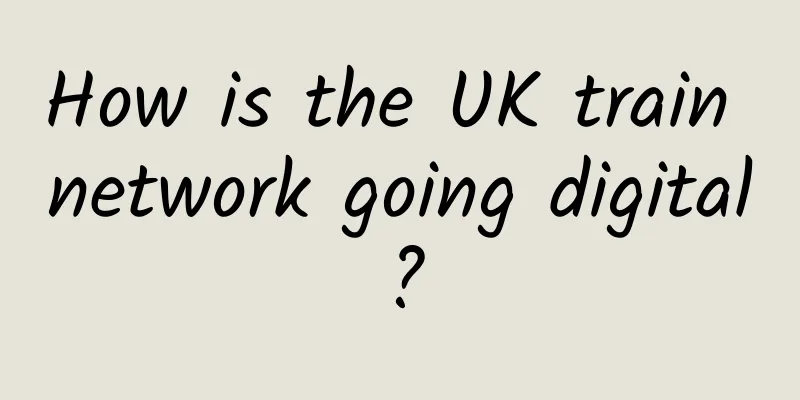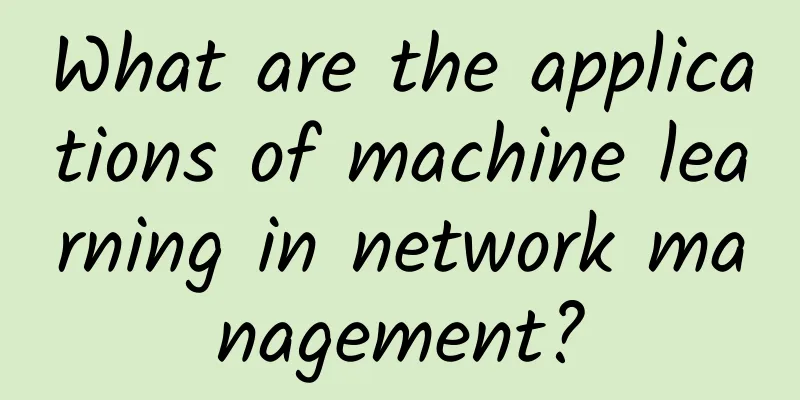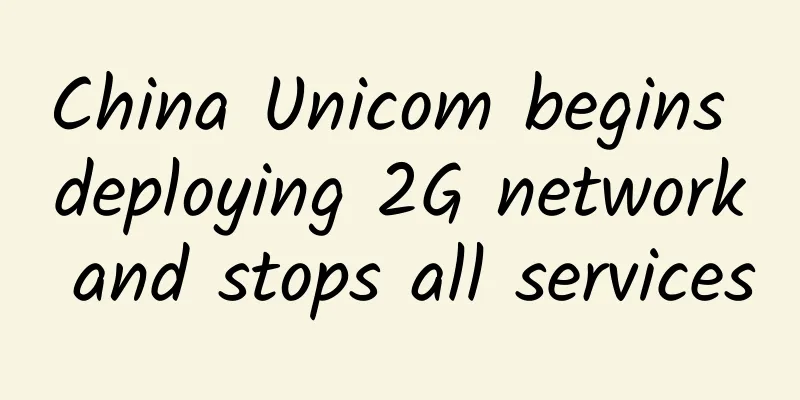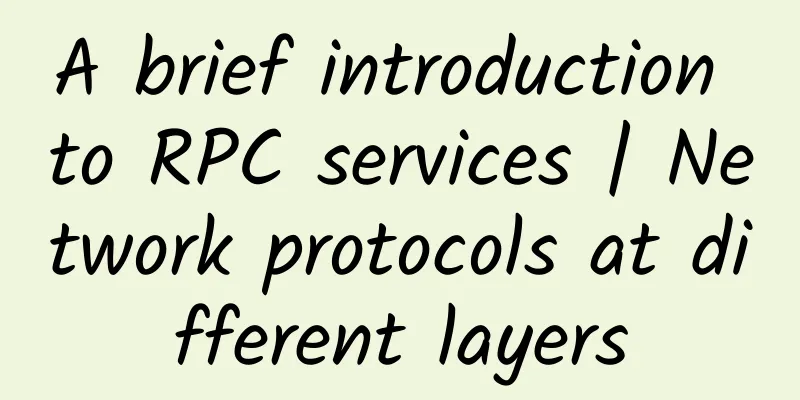How is the UK train network going digital?

|
[51CTO.com Quick Translation] Dennis Rocks, product manager for traffic management at DXC Technology, said that whether it is new airport runways, new railway lines or smart motorways, the UK's transportation infrastructure has not received positive media coverage. Advances in digital technology offer many opportunities for rail operators, with a recent World Bank blog post noting that “5G, big data, the Internet of Things, automation, artificial intelligence and blockchain” are leading to a “profound transformation” for the global rail industry. Speaking of the UK’s rail network, we are seeing the rail system finally undergoing the digital transformation process that many in the industry have been talking about for several years.
Cleaner and more environmentally friendly For example, the Thameslink line now runs 24 trains per hour, a 50% increase in capacity over previous years, and a lot of work on the back end was needed to make this possible. Rail operators are increasingly integrating control centres and building modern, computerised facilities based on data analysis. This allows rail companies to gather intelligence and use information on on-time departures, delays and overall passenger volumes at each time period and season to improve planning and operations. Digital enterprise asset management (EAM) systems are another process improvement that rail operators are deploying to reduce maintenance time, improve work efficiency, and reduce costs. EAM systems can accurately identify assets or facilities that need attention, provide maintenance personnel with instant and accurate status of rail inventory and parts, and track progress centrally, so that those remote staff can easily monitor the status of maintenance. EAM technology can also more effectively monitor inventory trains in rail yards, ensuring more predictive maintenance rather than repairing trains after they break down. Electric trains are also a big area of investment for rail companies - these sleek trains offer a cleaner option that many companies seek and are increasingly in demand by users of rail services. Electric trains are faster, have lower carbon emissions and are easier for drivers to manage. Developments in areas such as regenerative braking technology are welcome. Regenerative braking captures the energy used when slowing a train and reuses it. This provides a smoother ride for passengers due to fewer stops and starts, while an added benefit is improved energy efficiency, further reducing pollution. Growth due to passenger benefits Digital technology is also benefiting rail’s most important stakeholders: passengers. Mobile ticketing, the ability to book tickets or check timetables through Alexa and other digital assistants, and automatic refunds when trains are late or broken down have all made a significant difference to rail users. The overall effect is impressive; data from the UK Rail and Road Agency shows that the number of rail passengers in the UK reached a "record high" in 2018-2019: 1.759 billion trips, an overall increase of 3% compared to the previous year. The increase in train use has been attributed to many factors, including changing consumer attitudes towards the energy-saving and environmental protection of railways, or the time and cost savings compared to car travel, but it is clear that digital transformation has made train travel easy, cost-effective and environmentally friendly. Focus shifts to cybersecurity One of the major impacts of the industry’s ongoing digital transformation is the resulting focus on cybersecurity. Moving from a paper-based system to a digital infrastructure requires rail operators to pay extreme attention to their cybersecurity posture. Operators must develop security awareness programs for grassroots employees; and clearly communicate to passengers how to protect their digital identities when they purchase train tickets online, and passengers increasingly rely on mobile phones and mobile devices to manage busy travel schedules. Likewise, on the “back end” IT staff side, railroads need to ensure strong defenses are in place. For example, ensure a solid patch management program is in place so that back-end software runs securely and there are fewer opportunities for threat actors to inject malware. Patch management can be hampered by misinformed employees who reject security patches and don’t realize how important they are, so automation is key. Most security experts say that with a solid patch management program and basic security awareness around email phishing, organizations can prevent the vast majority of cyberattacks. Relive the glory days When it comes to digital transformation in the transport industry, airlines and ride-sharing companies (such as Uber and Lyft) may be leading the way, but rail operators are not as fast as these companies, but have made great progress in recent years. When it comes to the rail network, the UK is entering a new era of investment, and continued focus on environmental challenges will mean that train travel will remain the preferred choice. Change is slow, but with progress across the industry in back-end technology and analytics, mobile applications and electric trains, we are on the verge of a digital future for the tracks and a new era of train travel. How the UK Train Network is Going Digital [Translated by 51CTO. Please indicate the original translator and source as 51CTO.com when reprinting on partner sites] |
<<: The 5G R16 standard is frozen. What does it mean?
>>: 10 questions to ask during TCP protocol interview
Recommend
Little-known tips for ordinary users to install broadband at home
In the past two years, broadband has become a mus...
DesiVPS: Los Angeles 1Gbps unlimited traffic VPS from $18.99 per year, India/Netherlands VPS from $20 per year
DesiVPS has released the latest promotional packa...
Breakthrough in electricity usage could lead to big savings for data centers
Serial links are responsible for transferring dat...
The briefing session for the Kunpeng Application Innovation Competition 2020 (Tianjin Division) was successfully held!
On July 29, 2020, the Kunpeng Application Innovat...
Huawei aims to be a smart city incubator providing basic energy
During the just concluded National People's C...
Six common IoT wireless technologies and their use cases
The Internet of Things (IoT) starts with network ...
Live coverage of the 2018 Yunnan-Huawei Software Industry Summit: Accelerating software growth and empowering the digital economy
[51CTO.com original article] From December 20th t...
AI and 5G ranked as top technology trends for 2022 and beyond
In a survey of 350 chief technology officers, chi...
Three "fairy tale" ways to build a data center
There is a very important indicator for evaluatin...
ExtraVM first month 30% off starting at $1.5, AMD Ryzen9 series, 1~10Gbps unlimited traffic, data centers in the United States/Netherlands/Japan/Singapore, etc.
ExtraVM recently released a 70% discount on the f...
9 killer apps for edge computing
Edge computing provides a new paradigm for runnin...
"Smart cars" drive on "smart roads", Lenovo and Intel work together to enable the coordinated development of vehicles, roads and clouds with 5G+AI computing power
On May 18, Lenovo and Intel jointly demonstrated ...
Qianxinan Prefecture: Green "optical" network, a new style of government office
On a normal working day, sunlight shines through ...
Making cities smarter! Huawei's smart city nervous system demonstrates stronger capabilities from bottom to top
[51CTO.com original article] On the morning of Au...
Faced with Apple's competition for the live streaming platform, Yunfan accelerates the launch of the first H.265 live video transmission solution
Recently, media reported that Apple is rectifying...









